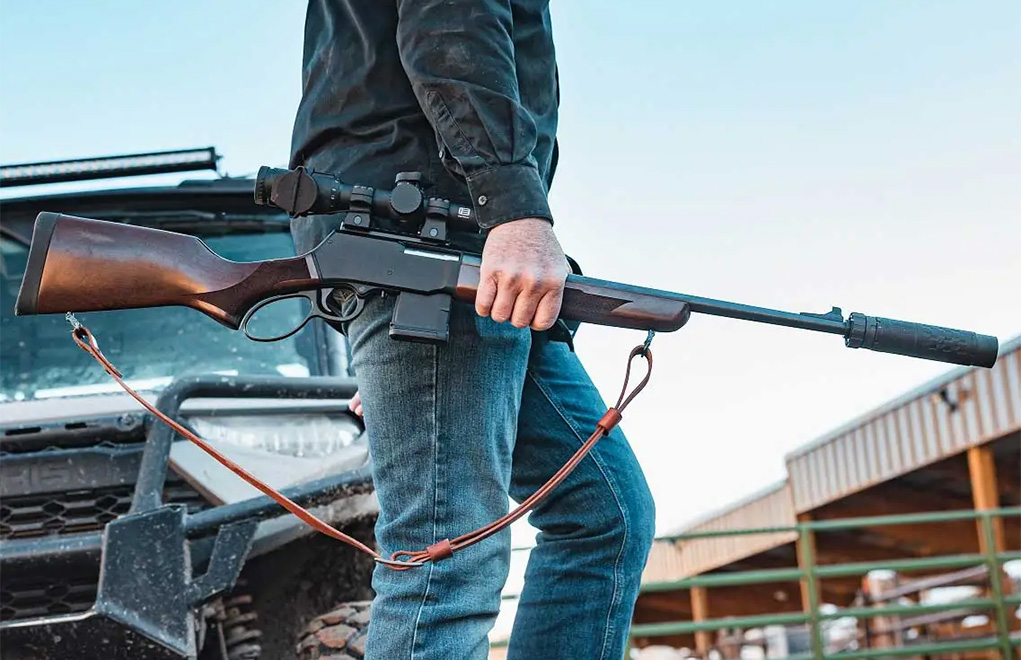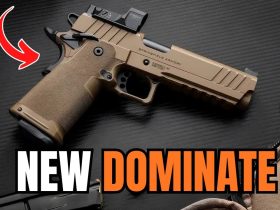As pleasurable as a large and varied arsenal might be, it’s more aspirational than practical. This is especially true during times when everything costs twice what it used to. Maintaining a full stable of mules is much more expensive than taking care of a five-mule team. From a minimalist approach, what guns—chambered for what cartridges—and what loads for those guns and cartridges are the most practical?
Jeff Cooper founded the oldest and largest private firearms-training academy in the world and did more to advance the martial art of small arms than anyone in history. In his book, “To Ride, Shoot Straight, and Speak the Truth,” Cooper dedicated a chapter to “The Role of the Five” where he postulated that the rifle, carbine, pistol, shotgun and the machine pistol were the five primary small arms. However, he did not dwell on the best ammunition choices for these firearms, which might be just as important. Given those five platforms (with one modification), what cartridges and loads would best complete a modern-day minimalist arsenal?
The Rifle
Cooper felt this category was best filled by a battle rifle, chambered for a full-size military cartridge. He likely answered the rifle-cartridge question when he stipulated the .308 Win. as the preferred chambering for his Scout-rifle concept. Whether your rifle is a semi-automatic, bolt-action, pump or lever-action, no other cartridge offers a better balance of power, trajectory and recoil than the .308 Win.
Typically loaded with between 130- and 180-grain bullets, .308 Win. ammo comes in an impressive assortment of options, from the legendary Remington Core-Lokt to extreme high-BC bullets like Hornady’s ELD-X. Outside extreme-distance shooting, there’s no need for the high-BC bullets. A good bonded or mono-metal 150-grain bullet like the 150-grain TTSX load from Buffalo Bore is big-game capable worldwide, shoots reasonably flat and will defeat soft cover. This load will do anything, nearly anywhere, of which a rifle is capable.
The Carbine
Of the five weapon systems, the carbine could be the most difficult to define. Since it is technically a short(er)-barreled rifle, it could be anything from a 16-inch-barrel lever gun to a break-action single-shot. Cooper felt the carbine was best defined as not just a reduced rifle, but a rifle that fired a reduced cartridge like the 5.56 NATO (.223 Rem.) or the 7.62×39 mm. With the sheer number of 5.56 NATO/.223 Rem. carbines in use, it’s hard to see where he was wrong.
There are a host of AR-15-compatible cartridges, including everything from the 22 ARC to the 450 Bushmaster. Some may shoot flatter—or hit harder—than the .223 Rem./5.56 NATO, but none provide the general-purpose application and capacity of the AR mainstay. Loaded with a tough, but speedy option like Speer’s 55-grain Gold Dot load, there are very few carbine-related tasks, from self-defense to surviving an apocalyptic event, this load could not handle well.
The Pistol
At first it seems there’s a lot to consider here, but in the end it all comes down to the 9 mm. Yes, a .38 Spl./.357 Mag. revolver is versatile, and the .45 ACP hits a bit harder. But, the bottom line is that the capacity and power of the 9 mm, balanced with its softer felt recoil and wide array of small and large pistols from which to choose gives it an undeniable edge over everything else. This is, of course, why it’s the most popular handgun cartridge in the world.
Shooters will argue endlessly about whether a 115-, 124-, or 147-grain bullet is the best choice, but, in truth the differences are minimal. The pistol is your primary defense against human threats, and a lot of terminal-performance testing has shown that the vaunted Federal 124-grain HST load is about ideal unless extremely deep penetration is desired. If that’s the case, you have your rifle.
The Shotgun
Though sometimes thought of as a specialty tool, the shotgun is quite versatile. The ability to be used for multiple roles just by switching what it’s fed is the shotgun’s primary virtue. This is primarily due to the wide assortment of loads available, such as slugs, shotshells and various less-lethal options. There are several shotgun gauges and cartridges from which to choose, but the 12 gauge offers the most productive payloads. And, while it might also seem difficult to settle on one load, it becomes much simpler when you consider what the shotgun actually does better than the other four platforms.
The shotgun excels at hitting things in the air. Yes, it has application for home defense, but for that a good wing-shooting load can suffice, even if it is far from ideal. Using a 1,400 fps, 2¾-inch 12-gauge No. 6 shotshell like Remington’s copper-plated Nitro Pheasant load or something similar will work just fine to bring flying feathered game to the ground, maximize capacity and deter a home invader from across the room. If you want to further tune the shotgun’s performance, use chokes.
The Rimfire
I suggest that a rimfire rifle or handgun should take the place of the full-automatic machine pistol in Cooper’s list of five. Though a machine pistol can fill a very specialized role, it’s a role few civilians need to fill, and its ownership is heavily regulated (and excruciatingly expensive). On the other hand, a rimfire long gun or handgun is a wonderfully versatile firearm that’s particularly well suited to training, small-game hunting and maybe most importantly, recreation.
From 1887 until 1959 when the .22 WMR was introduced, the .22 LR cartridge was the dominant rimfire. The Magnum doubles .22 LR performance, and while it might be better in a survival situation, it cannot compete with the .22 LR in terms of affordability and shooting pleasure. Every arsenal—no matter the size—should include at least one firearm chambered in .22 LR, and that arsenal should also have a large stock of 40-grain hollowpoints with a muzzle velocity (from a rifle) of about 1,400 fps. Winchester’s Hyper Velocity Copper Plated Power Point load is an ideal one-load option.
The type and style of firearm you choose is important, but it is the ammunition you shoot that really sets guns apart. You could add additional loads to this list, but from a practical standpoint, if your arsenal only includes those listed here, you’re pretty much prepared for anything short of an alien invasion. If that happens, who knows? A pellet gun might suffice, or a nuclear warhead might not be enough.
Read the full article here


















Leave a Reply